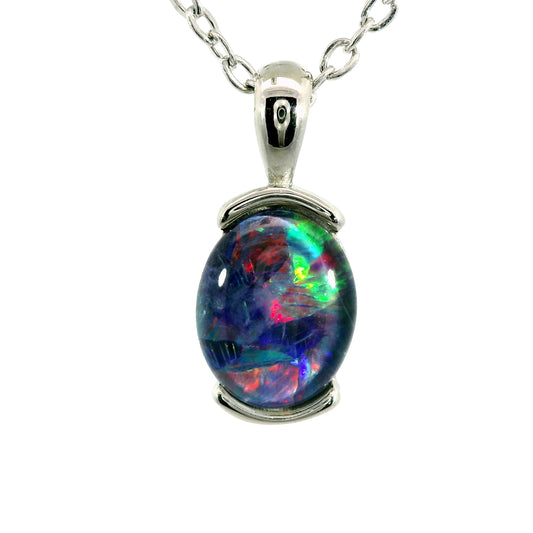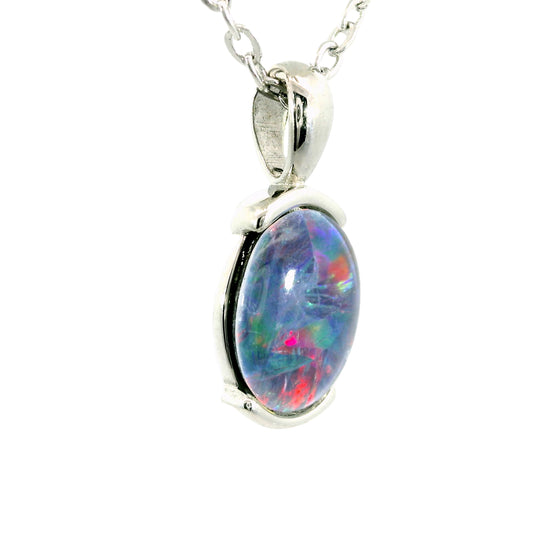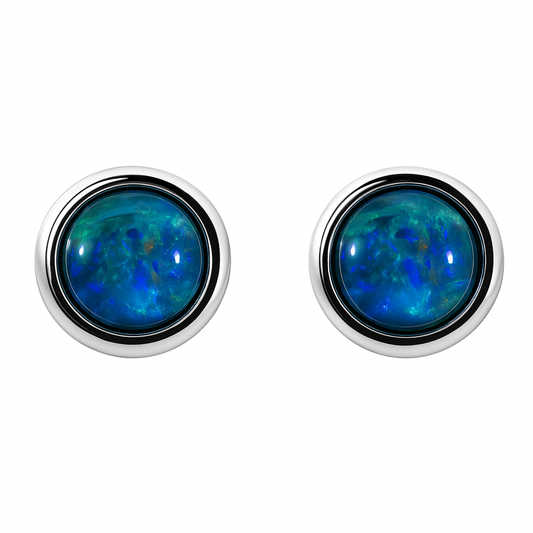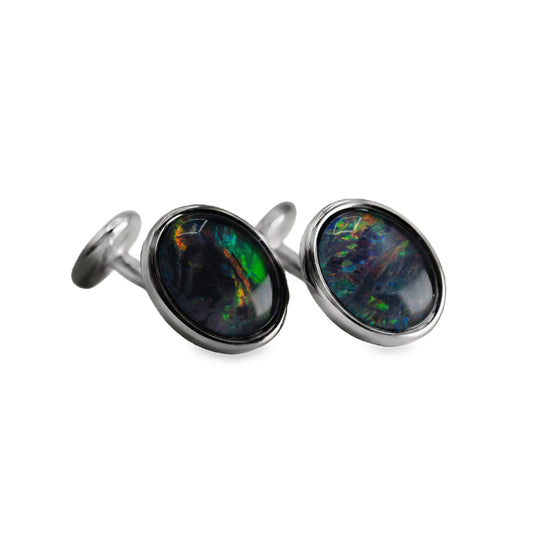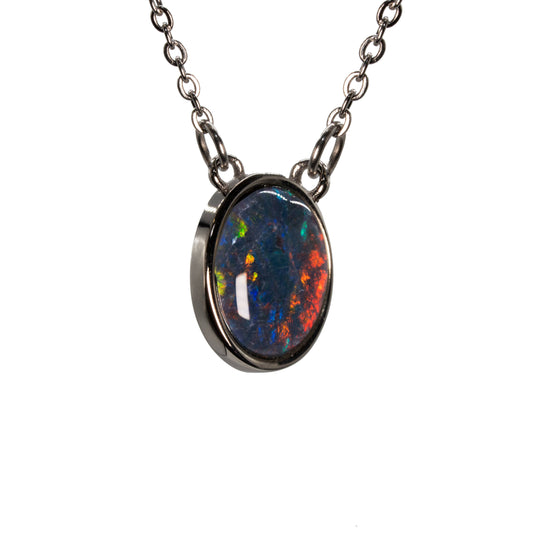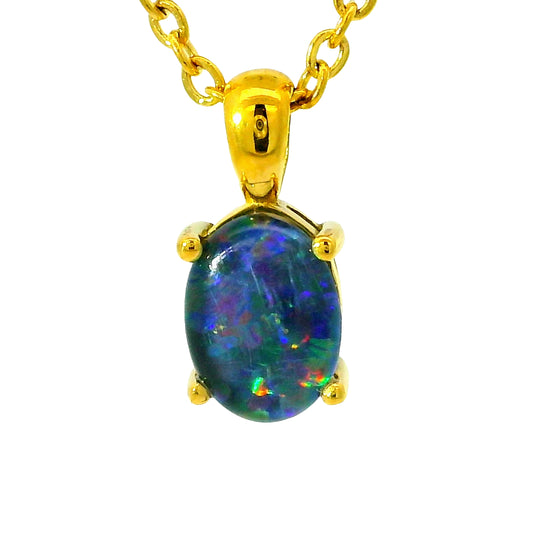The Significance of Jewellery
A short guide to the spiritual and emotional uses of Jewellery
To many individuals, jewellery acts as an aesthetic accessory; something that can be dawned on in conjunction with other colours and textures. In a broader sense, the effect jewellery has on everyone cannot be overstated, when the act of wearing specific items holds a much deeper emotional or spiritual significance and - in some instances - presents an open and somewhat vulnerable look into specific ideals and beliefs.
The Spiritual and Personal Impact of Jewellery
Religious and Cultural Significance
The spiritual and personal effect of jewellery has been heavily documented; Jewellery worn for religious and cultural reasons holds a wonderful effect - it not only is deeply personal and symbolic, but psychologically, can empower the wearer through its use. A well-known example of this phenomenon is through religious jewellery (such as the crucifix necklace), or ‘evil-warding’ talismans (such as the evil eye). Wearing a crucifix enlists “the love of God, which is called to bring hope, strength, and allow the individual to overcome any obstacle in his or her life”, it is also worn as a constant reminder and visible symbol of one’s belief in Christ’s sacrifice. In Greek culture, the evil eye (known as “mati” (μάτι)) refers to a ‘malicious glare’ that is said to bring bad luck to those who receive it; however, the talisman of ‘the evil eye’ is said to protect you from ill intentions, leading to this jewellery being worn at all times in order to ward off any negative thoughts, and leave an individual spiritually and emotionally protected.
Psychological Empowerment
The personal ties that an individual has towards their jewellery lead to an overall more positive experience, creating a sacred basis as the item becomes elevated and incorporated into a much more ‘spiritual’ realm. Regardless of any personal stance on the spiritual and supernatural, there have been various psychological studies that aim to outline the effect such items have in daily life; through rigid research, a strong connection can be drawn between this jewellery being worn and seen visibly, to an increase in emotional and mental empowerment, and an overall sense of unbreakable security.
Psychological Benefits Beyond Spiritual and Religious Significance
The Rise of Fidget Jewellery
Jewellery, even if not given or worn in conjunction with a spiritual or religious belief, can still aid psychologically. At first glance, the upcoming popularisation of ‘fidget jewellery’ could potentially be seen as ‘unnecessary’, however, to those who have conditions such as anxiety, ADHD, or OCD, such jewellery can create an overflow of positives within daily life.
Fidget Jewellery and Mental Health
Fidget jewellery is relatively simple in its design, being made of common materials such as silver, gold, or bronze; what makes these items stand out from ‘classic’ jewellery are their functions, as the wearer can usually spin and manipulate particular design features, allowing for repetitive (but barely noticeable) movement and ‘fidgeting’. These repetitive sensations of fidget jewellery have been shown to help with anxiety, as they provide a sense of focus - that otherwise would not be found - through the distraction of movement. These items provide a safe outlet and a way to release pent-up anxious energy and give the brain a distraction from anxious thoughts and impulsions.
Scientific Perspectives on Fidgeting
Renowned Business magazine, Forbes, reported on the benefits of fidgeting in a study done in 2017, stating that there are “theories but limited concrete scientific evidence” as to why such repetitive actions could help; a solid theory proposed is that the act of fidgeting occupies the parts of your brain that would otherwise be focusing on distracting or otherwise intrusive thoughts. Polytechnic Institute of New York University’s Michael Karlesky and Katherine Isbister conducted a similar report in 2014, surrounding hyperactive children and those with ADHD (Attention-deficit/hyperactivity disorder), which found that “fidgeting is a coping mechanism the body employs to promote natural stimulant release, enabling the mind to focus on tasks. Anecdotally, encouraging fidgeting in the classroom ... seems to improve focus in children”.
Jewellery As A Coping Mechanism
Another massively important minority that benefit from such jewellery are those who stim (meaning: repetitive or unusual body movement or noises), which is a trait commonly associated with autism; the tactile sensation and repetitive movements of fidget jewellery provide a safe and localised outlet for stimming, with such jewellery pieces (although small) allowing for an incredibly localised, and reliable sensory input for the individual, allowing for a discreet means of stimming to always be ‘close at hand’. This mental and medical correlation to jewellery is something not often seen or acknowledged within mainstream media, however it is still critical to those who benefit from such means. It is reasonable to argue that anyone, neurodiverse or otherwise could benefit from the concept of fidget jewellery, even more so could be said that everyone (to some regard) will fidget with their jewellery!
Emotional Significance and Personal Connections
Emotional Attachments and Significance
Any jewellery can be given the attribute of ‘significant’, with the only qualifier being the personal relationship between individual and their item. The most obvious significance comes with an emotional attribute that may be tied to their piece; some things are granted this title by chance, or due to timing (ie: a gift from an important loved one). Other pieces can signify a wearer's status, or an individual belief they hold dear; these pieces can carry a heavy significance, as their usage is often maliciously calculated.
A wedding ring is a lovely example; an individual who wears their wedding ring is not only doing so out of personal devotion, but stands as a bold visual to outsiders that a commitment has been made. “For many, a wedding ring is more of a token that serves as a physical and concrete manifestation of this new phase of their life and identity,” says Licensed Psychologist and Adjunct Professor Christina Kirsch, “A ring may help ground them in their transition for their identity as a single entity to one that is now merged with another as a single unit.” This statement lends to the idea that a wedding ring or band can have a psychological significance beyond being ‘just a ring’. The idea of being ‘grounded’ has positive connotations, bringing with it thoughts of being well balanced with a sensible mindset; the action of wearing this ring can give the personal viewer a constant visual and physical reminder of not only their devotion, but status within their union.
Jewellery as a Cultural and Social Symbol
For many cultures, jewellery can carry important significance, being upheld as a social status, wealth, or rank within society. This notion can be tied back to the creation of signet rings; originating from the Latin word ‘signum’ (meaning ‘sign’), signet rings find themselves synonymous with power and authority, being used primarily amongst religious leaders and pharaoh. They also served a physical purpose, being used to mark and seal documents by pressing the rings ‘face’ (usually consisting of a unique family crest) into hot wax. It cannot be denied that possessing and displaying such a symbol would have a greater psychological effect on both the wearer, and those around them; such a ‘mark of authenticity’ would create the illusion of grandeur in the eyes of those around the individual, leading to different treatment (granted, due to status, some of this treatment was rightfully expected). Jewellery has been used for centuries to signify personal or societal status, with such a role and connotations following us into the 21st century.
The Universal Significance of Jewellery
Jewellery is significant. Regardless of its usage, there is no denying the deep interpersonal connection that arises when jewellery is loved and cared for, and in return, an individual will be able to see the obvious psychological benefits that arise from said items.











































































































